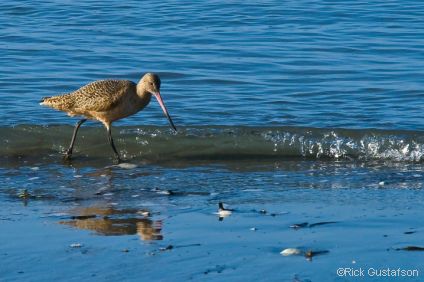 More than 250 species of birds can be seen in and around Humboldt Bay. Many are year-round residents that nest in our region. Humboldt Bay is known for an abundance of migratory birds, and is a major stop on the Pacific Flyway. The bay’s mudflats providing excellent feeding-grounds for shorebirds, including American avocets, long-billed curlews, marbled godwits, and willits. During the summer months, common sightings include terns, cormorants, and pelicans, as well as resident egrets, herons, and migratory songbirds.
More than 250 species of birds can be seen in and around Humboldt Bay. Many are year-round residents that nest in our region. Humboldt Bay is known for an abundance of migratory birds, and is a major stop on the Pacific Flyway. The bay’s mudflats providing excellent feeding-grounds for shorebirds, including American avocets, long-billed curlews, marbled godwits, and willits. During the summer months, common sightings include terns, cormorants, and pelicans, as well as resident egrets, herons, and migratory songbirds. Humboldt Bay plays a critical role for the black brant, a small goose that feed primarily on eelgrass. Humboldt Bay supports the largest remaining eelgrass habitat south of Willapa Bay, Washington, and provides critical feeding grounds for brants along their migration route. On their return trip from Mexico, they stop here on their way back to Alaska - usually from January to April, when as many as 10,000-20,000 brants may be feeding Humboldt Bay at a given time.
The Aleutian Cackling Goose is another Arctic species that migrates in large flocks. Their high-pitched calls are a harbinger of autumn, when they are on their way south to the vast Central Valley wetlands. In late winter/early spring, they return to the seasonal wetlands of the Humboldt Bay to store up energy reserves for the long flight back to the Aleutian Islands. In early March, the Cackling Goose Flyoff at Humboldt Bay National Wildlife Refuge is truly spectacular. Best times for birdwatching are generally at dawn and dusk, and within 1-2 hours of the high tide. For more info about local birds and birdwatching, visit the Redwood Region Audubon Society's website. The annual Godwit Days, a three-day festival celebrating the spring shorebird migration, is held every year in April.


